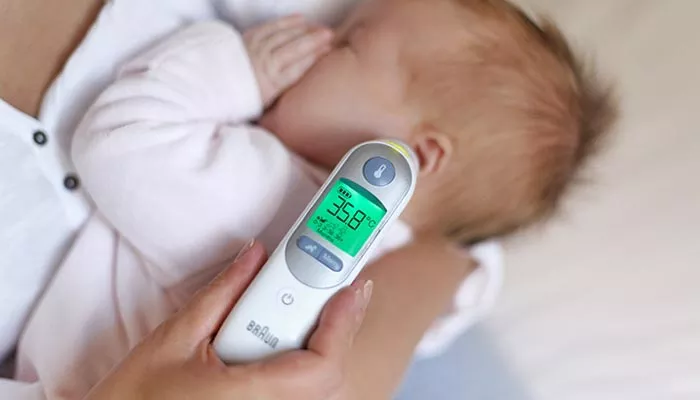Transcutaneous bilirubin levels are crucial indicators of newborn health, specifically concerning jaundice, a common condition affecting infants in the first days of life. Here, we delve into what constitutes normal levels of transcutaneous bilirubin, how they are measured, and their significance in pediatric care.
What is Transcutaneous Bilirubin?
Bilirubin is a yellow pigment produced by the breakdown of red blood cells. In newborns, bilirubin levels can rise due to the physiological breakdown of fetal hemoglobin and the immaturity of the liver in processing and excreting bilirubin. Transcutaneous bilirubin (TcB) refers to the measurement of bilirubin levels through the skin, often using a non-invasive device that provides an estimate of serum bilirubin levels.
See also: Do Infants See in Black and White?
Importance of Monitoring Bilirubin Levels
Monitoring bilirubin levels is critical because high levels can lead to jaundice, a condition where excess bilirubin accumulates in the blood and tissues, causing a yellowish discoloration of the skin and eyes. Severe jaundice can potentially lead to neurological complications such as kernicterus if not managed promptly.
Normal Range of Transcutaneous Bilirubin Levels
The normal range of transcutaneous bilirubin levels varies depending on factors such as gestational age, birth weight, and the age of the newborn. Generally, the levels are higher in the first few days after birth and gradually decrease as the baby’s liver matures and bilirubin excretion improves.
Factors Affecting Transcutaneous Bilirubin Levels
Several factors influence transcutaneous bilirubin levels in newborns, including:
Gestational Age:
Premature infants may have higher bilirubin levels due to an immature liver.
Breastfeeding:
Exclusive breastfeeding can sometimes lead to higher bilirubin levels.
Blood Type Incompatibility:
Rh or ABO blood group incompatibility between mother and baby can increase bilirubin production.
Genetic Factors:
Certain genetic conditions can predispose infants to higher bilirubin levels.
Measurement Techniques
Transcutaneous bilirubin levels are typically measured using a handheld device placed on the baby’s skin, often on the forehead or sternum. The device emits light at specific wavelengths that are absorbed by bilirubin in the skin. The amount of light absorbed correlates with the level of bilirubin present.
Interpretation of Transcutaneous Bilirubin Levels
Interpreting transcutaneous bilirubin levels requires consideration of the baby’s age in hours, gestational age, and any risk factors for hyperbilirubinemia. Healthcare providers use nomograms or charts to determine whether a baby’s bilirubin levels are within the normal range or if further testing or intervention is needed.
Managing Elevated Bilirubin Levels
If transcutaneous bilirubin levels are elevated beyond the normal range for a baby’s age and gestational age, healthcare providers may recommend:
Phototherapy:
Exposing the baby’s skin to special blue light helps break down bilirubin and reduce levels.
Feeding Support:
Ensuring adequate feeding helps promote bilirubin excretion through stool.
Monitoring:
Regular monitoring of bilirubin levels to assess response to treatment and prevent complications.
Conclusion
Understanding normal transcutaneous bilirubin levels is essential for parents and healthcare providers to monitor newborn health effectively. Early detection and management of elevated bilirubin levels can prevent complications associated with severe jaundice. By educating caregivers about the significance of bilirubin monitoring, we can ensure better outcomes for newborns at risk of jaundice-related complications.
FAQs
What is the Normal Range of TSB in Newborns?
Total serum bilirubin (TSB) levels in newborns typically follow a pattern where they rise after birth and then gradually decrease as the liver matures and becomes more efficient at processing bilirubin. The expected ranges are as follows:
In the first 24 hours: TSB levels are generally below 5 mg/dL. This is because the baby’s liver is still immature and adjusting to life outside the womb.
At 48 hours: Levels can rise up to 12 mg/dL. This is often when bilirubin levels peak, as the liver starts processing the bilirubin produced from the breakdown of fetal hemoglobin.
At 72 hours: Levels are expected to peak around 15 mg/dL. This is considered the upper limit of normal for full-term infants.
After the first week: Levels should start to decrease, ideally falling below 10 mg/dL as the baby’s liver function improves and bilirubin excretion becomes more efficient.
Premature infants and those with certain risk factors (e.g., hemolytic diseases, breastfeeding difficulties) may have different normal ranges and may require more frequent monitoring.
How to Read a Jaundice Report for a Newborn Baby?
Reading a jaundice report involves several steps:
Total Serum Bilirubin (TSB) Levels: This is the primary indicator of jaundice severity. It is measured in milligrams per deciliter (mg/dL). The report will show the TSB level along with the infant’s age in hours.
Direct (Conjugated) Bilirubin: This represents the bilirubin that has been processed by the liver and is ready for excretion. Normal levels should be less than 1 mg/dL. Elevated direct bilirubin can indicate liver or bile duct issues.
Indirect (Unconjugated) Bilirubin: This is calculated by subtracting direct bilirubin from TSB. It is usually higher in newborns due to physiological jaundice. High levels of unconjugated bilirubin need close monitoring to prevent complications.
Nomogram Interpretation: Healthcare providers often use a bilirubin nomogram, a chart that plots bilirubin levels against the baby’s age in hours to assess the risk of hyperbilirubinemia. The chart has zones indicating low, intermediate, and high risk for severe jaundice.
What is a TcB Test for Newborns?
A transcutaneous bilirubin (TcB) test is a non-invasive method to estimate the bilirubin level in a newborn. Here’s how it works:
Procedure: The test uses a handheld device, often called a bilirubinometer, which is placed on the baby’s forehead or sternum. The device emits light at specific wavelengths, which penetrates the skin and is absorbed by the bilirubin.
Measurement: The amount of light absorbed and reflected back is measured by the device, which then calculates an estimated bilirubin level.
Advantages: The TcB test is painless, quick, and provides immediate results. It is particularly useful for screening large numbers of newborns and identifying those who may need further testing or treatment.


